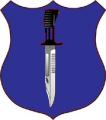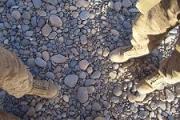My pre-occupation here is the need to differentiate between opponents rather than conflicts.
A while ago, good ole Norfolk made an interesting observation, which was that in general fighting a so-called peer-competitor required the mastery of such complex operations, such as “passage of lines,” and I would add “opposed breaching and obstacle crossing.”
He went on to suggest (and jump in here Norfolk if I am paraphrasing too much) that such operations were not present in so-called COIN. – This I believe to be generally accurate.
So we have to do things because the enemy has capabilities that force us to conduct certain types of operation? Is this correct?
This may be a statement of the bl**dy, or "Boydian" obvious, but if anyone has any deeper or more relevant insights, post away or PM me.










 "A Sherman can give you a very nice... edge."- Oddball,
"A Sherman can give you a very nice... edge."- Oddball, 
Bookmarks